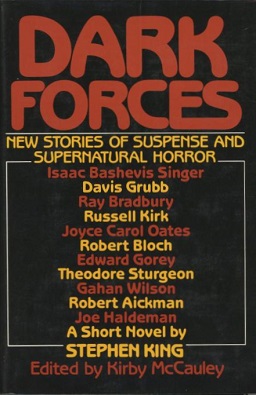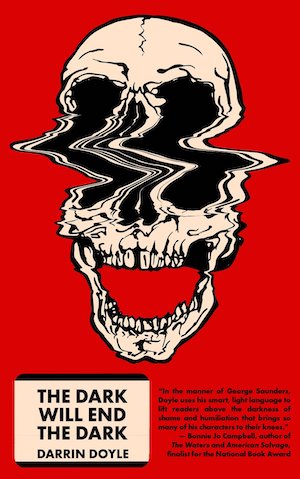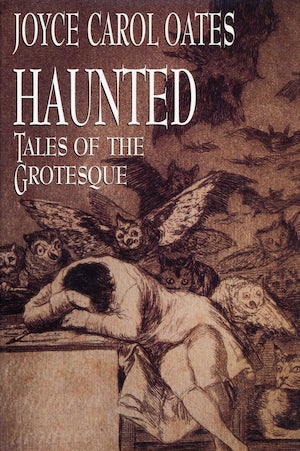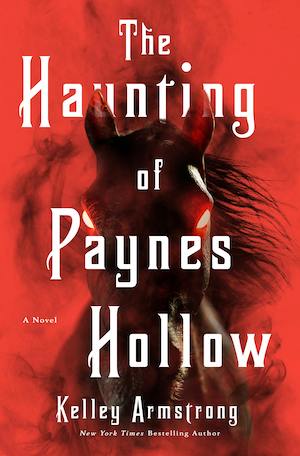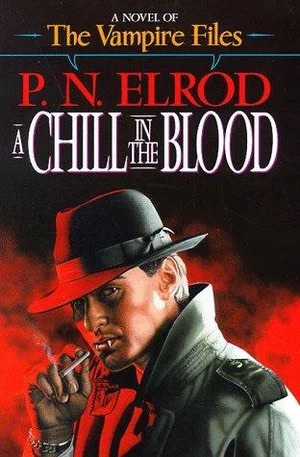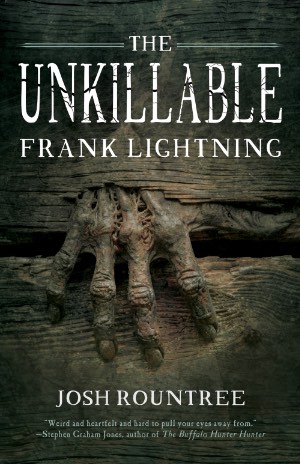-
The Night Before Christmas: A Retro Review
Horror fiction icon Robert Bloch (1917-1994) had an often-quoted quip: “I really have the heart of a small boy. I keep it in a jar on my desk.” Indeed, Bloch had a deliciously deviant sense of humor. Irony permeated his writings, and the ending of his short story “The Night Before Christmas” exemplifies Bloch’s penchant for twisted wit. Originally published in the seminal anthology Dark Forces edited by Kirby McCauley in 1980, the tale remains shocking and consummately Blochian. The narrative is told in retrospect by an artist in Los Angeles who receives a commission to paint a portrait. Although reluctant to engage with the shipping magnate who requested his…
-
Happy Turkey Day
The collection of stories featured in The Dark Will End the Dark by Darrin Doyle display a fondness for the surreal. There’s a sense of reverence for Franz Kafka, most particularly his famous novella “Metamorphosis,” in which the protagonist wakes up transformed into a giant insect. Doyle’s writing also exudes a fondness for the Theater of the Absurd, finding a sort of solace in the comedic aspects of preposterously taxing situations. Reading fifteen tales in this vein can become rather repetitive. Perhaps that’s why I am choosing to focus on one story; a yarn that differs from the rest in terms of more detailed characterization, and more depth in general.…
-
Thanksgiving: A Retro Review
The Christmas ghost story is a component of horror fiction. Knowing that made me wonder about ghost/horror stories pertaining to Thanksgiving. Did such things exist beyond the standard Thanksgiving non-fiction anecdotes of a party going disastrously awry, or an accident involving a frozen turkey? I turned to the Internet and found AI suggestions regarding slasher movies that seize upon various holidays, Thanksgiving included, for subtext. And was also guided to regional folk tales that purportedly took place on the day. Digging deeper, I happened to find a reference to a Joyce Carol Oates short story that had the title “Thanksgiving.” I tracked it to a collection of her stories published…
-
The Haunting of Paynes Hollow
While an undergrad at UCLA many years ago, I took a class on review writing in the arts. One of the guest lecturers wrote book reviews for the Los Angeles Times. He confessed that being a book critic led to certain prejudices. He had grown tired of specific types of novels, and passed on reading them. Although he named three “subgenres” that he refused to review, I only remember two: novels set in Florida, and narratives that featured talking animals. This may seem rather eccentric but now, after years of being a book critic myself, I do understand. And it is best to acknowledge prejudices and biases. When reviewing a…
-
The October Film Haunt
A sense of community, of belonging, is a wonderful feeling. In The October Film Haunt by Michael Wehunt looks at the flipside of craving a tribe; what happens when community becomes a cult, when belonging turns into a fetish, when that emotional high can only be sustained by internet rabbit holes and the like. All of us horror fans get a psychological boost when we mingle with our kind, and author Wehunt smartly plays upon that camaraderie while probing the tenuous boundaries between enthusiasm and dangerous excess. The narrative is canny in referencing horror fandom avatars and for employing meta in a manner guaranteed to amuse the targeted reader. There…
-
One of Us
“Weird” is a complimentary word in the lexicon of horror fiction. One of Us, written by Dan Chaon is one of the weirder books I’ve read. It’s very literary and cinematic in allusions; I can easily fantasize a film adaptation sumptuously directed by Guillermo del Toro. The narrative largely unfolds in 1915, a time when the world was in flux and keen on cultural oddities. Carnivals and sideshows satiated the appetite for the bizarre. Author Chaon employs this universe to unveil an outlandish narrative that is tantalizingly peculiar. At times the novel is heartbreaking. In other instances, it is hilariously absurd and facetious, chock full of references warped by the writer’s…
-
Sleep No More: A Tribute to Greg Iles
Greg Iles defied expectations. He was diagnosed at age 36 with multiple myeloma in 1996, but unlike many who succumb to the illness within a few years after diagnosis, it didn’t reach the critical stage for him until the 2020s. He died on August 15 of this year. In 2011, he was severely injured in a car accident, which resulted in amputation of his left leg. That was a three-year recovery period, but established author Iles continued his writing and produced what is perhaps is most lauded body of work, known as The Natchez Burning trilogy. Years before that collective magnum opus, he dabbled in the horror genre. Sleep No…
-
Fiend
Alma Katsu has built a solid reputation as a writer of historical horror fiction. With Fiend, her latest novel, Katsu shifts gears, crafting a work set in present day. The publicity blurbs describe it as Succession mixed with the supernatural, and it is refreshing to see such truth in advertising. Of course, the premise of the popular television series, an obscenely wealthy family’s misuse and abuse of power, is not new. More dramatic takes can be found in theatre, with examples such as Shakespeare’s tragedy of King Lear, and two of the great Lillian Hellman’s plays: The Little Foxes (1939) and its prequel, Another Part of the Forest (1946) which…
-
A Chill in the Blood: A Retro Review
The 1990s was a fertile period for crime-fighting bloodsuckers. Author Tanya Huff wrote a themed sequence of books under the umbrella caption of The Blood Books (1991-1997.) Adapted in 2007 for CBC Television as the short-lived Blood Ties, the stories partnered a police detective with a vampire. Another Canadian TV production, Forever Knight, aired from 1992-1996. In this case, the vampire was himself a police detective. I have always preferred fictional private eyes over their counterparts on the force, which is why I was drawn to P.N. Elrod’s 1998 novel A Chill in the Blood. The book is the seventh in a series referred to as The Vampire Files, which stars PI Jack Fleming, a former journalist…
-
The Unkillable Frank Lightning
Resurrection and horror fiction have a long history. It’s hard to keep a good theme buried. The longevity of Frankenstein along with certain writings of Poe, and subsequent famous resuscitations of “The Monkey’s Paw” such as Pet Sematary, demonstrate that bringing back the dead is in an everlasting state of revival. The Unkillable Frank Lightning by Josh Rountree is a hybrid riff on the Universal Studios movie interpretation of Mary Shelley’s Frankenstein. Like Rountree’s previous novel, The Legend of Charlie Fish, which was based on Universal’s Creature from the Black Lagoon, the narrative uses the Old West as a partial backdrop. The reckless violence of the locale and era works quite well atmospherically for a tale of gore and…
